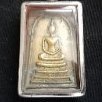Will Myanmar eventually switch back to right hand drive like American Samoa did?
-
Recently Browsing 0 members
- No registered users viewing this page.
-
Topics
-
-
Popular Contributors
-
-
Latest posts...
-
2
-
-
7
Trump says without subsidies Musk would have to ‘head back home to South Africa’
They are accorded refugee status, with limited recourse to public funds and work. If or once the conditions in South Africa change, the program will be canceled, and those with refugee status will have that canceled and be asked to settle their affairs, and return home. -
143
800k Not In the Bank Method
Just google 'Thai Immigration officers dismissed for corruption'. I'm sure they were only using their discretionary powers. It's OK, until it's not OK. -
57
Tourism Chaos Erupts: Hotels Back Out of Thai Government Tourism Scheme
there is an international name for this ........... -
26
Where can patients smoke their meds?
Much the same as the laws in America not to be smoked in public. Which leaves the home you live in. Which means basically if you don,t live here (expat) you can not smoke it. Have a Thai I.D card show it buy your stuff and go home. This thins out the tourist idiots who don,t give a damn about ANY Thai laws anyway. End of issue! Having said that if you are off by yourself on a remote beach who really cares. Only some Thai government dude that was never voted into office.
-
-
Popular in The Pub






.thumb.jpeg.d2d19a66404642fd9ff62d6262fd153e.jpeg)




Recommended Posts
Create an account or sign in to comment
You need to be a member in order to leave a comment
Create an account
Sign up for a new account in our community. It's easy!
Register a new accountSign in
Already have an account? Sign in here.
Sign In Now